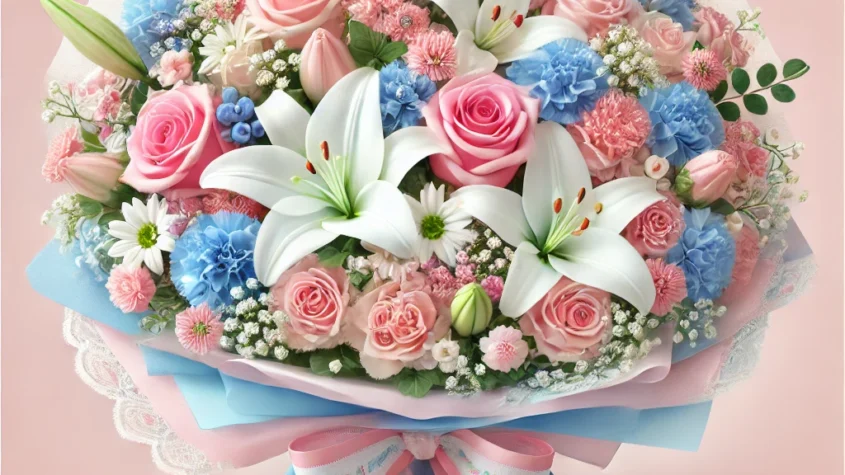
A sympathy bouquet serves as a heartfelt expression of condolences during times of loss. These floral arrangements convey support, compassion, and a sense of comfort to grieving individuals and families. Selecting the right sympathy bouquet can provide not only beauty but also a thoughtful gesture that honors the memory of the deceased.
Flowers have long been symbols of love and remembrance. Often chosen for their calming effects, blooms like lilies, chrysanthemums, and roses create a serene atmosphere while delivering profound messages of sympathy. Knowing the appropriate types and colors of flowers to choose can help convey the sentiment accurately.
When figuring out what to include in a sympathy bouquet, it’s essential to consider personal touches that reflect the recipient’s preferences or the deceased’s personality. Incorporating meaningful flowers or colors can enhance the emotional significance of the gift, making it more memorable during a difficult time.
Choosing the Right Sympathy Bouquet
Selecting an appropriate sympathy bouquet involves understanding the meaning behind flowers, their color symbolism, and the varieties available. This thoughtful choice can provide comfort to those grieving and express condolences effectively.
Understanding Sympathy Flowers
Sympathy flowers serve as a tangible expression of compassion and support for grieving individuals. They symbolize love, hope, and remembrance during a difficult time.
Common choices include lilies, roses, and chrysanthemums, each conveying a different sentiment.
Lilies represent purity and restored innocence, while roses symbolize deep love and respect. Chrysanthemums, often associated with death in many cultures, signify honor and grief. Familiarizing oneself with these meanings helps in selecting a bouquet that resonates with the recipient’s feelings.
Color Symbolism and Meanings
Colors play a crucial role in conveying emotions through sympathy bouquets. Different hues evoke various sentiments, impacting the message sent with the flowers.
- White signifies purity, peace, and innocence. It is a popular choice for funeral arrangements.
- Yellow represents friendship and remembrance, offering warmth during a somber time.
- Pink symbolizes grace and admiration, often chosen for those who had a significant impact on the sender’s life.
Choosing the right color not only enhances the visual appeal of the bouquet but also conveys the appropriate emotional sentiment, providing comfort to the bereaved.
Types of Flowers and Their Significance
Various flowers carry unique meanings, enhancing the message of sympathy.
- Lilies: Commonly used, they symbolize tranquility and the renewal of the spirit.
- Roses: A traditional choice, each color holds specific meanings; red expresses love, while white conveys purity.
- Carnations: Often used in arrangements, they symbolize a love that lasts beyond death.
When selecting flowers, consider personal preferences of the recipient and the deceased. Familiarity with individual favorites can add a personal touch, making the gesture even more meaningful.
Etiquette for Sending Sympathy Flowers
When sending sympathy flowers, understanding the nuances of timing, messaging, and delivery is essential. Thoughtful gestures can provide comfort to those in mourning. Attention to etiquette ensures that the sentiment is conveyed appropriately.
Appropriate Timing
Timing plays a crucial role in sending sympathy flowers. It’s best to send them as soon as possible after learning of someone’s loss. Early delivery can provide immediate comfort.
Key timings to consider include:
- Funeral Services: Arrangements should arrive within a few days leading up to the service.
- Home Visits: Sending flowers during the first week after the passing is often appreciated.
- Anniversaries: Remembering a loved one’s passing anniversary with flowers can be a meaningful gesture.
Being sensitive to cultural traditions regarding mourning periods is also important. Different cultures may have specific practices for when flowers are deemed appropriate.
Card Messages and Sentiments
The message accompanying the flowers should reflect genuine sympathy and care. Simple, heartfelt expressions are often most impactful. While individual sentiments may vary, certain phrases resonate widely.
Suggested messages include:
- “Thinking of you in this difficult time.”
- “With heartfelt condolences.”
- “Wishing you peace and comfort.”
It is also advisable to avoid overly personal anecdotes or lengthy messages. Keeping the card simple yet sincere maintains the focus on the grieving individual’s feelings.
Additionally, consider mentioning the deceased by name, which personalizes the message. This fosters a connection and shows respect for the individual being honored.
Delivery Considerations
Arranging the delivery of sympathy flowers requires thoughtfulness. It’s important to send them directly to the bereaved’s home or the location of the service.
Consider the following:
- Timing: Ensure delivery aligns with the timeline of funeral services or visitations.
- Condition: Confirm that flowers are sent fresh and arrange for timely delivery to avoid wilting.
- Sender Information: Including the sender’s name on the card helps the recipient know who to thank.
Using a reputable florist who understands these nuances can enhance the overall impact. Proper delivery conveys both respect for the situation and care for the recipient’s feelings.
Zudio Franchise: A Comprehensive Guide to Opportunities and Growth
Zudio franchises have become an attractive option for entrepreneurs looking to enter the r…




